How to Plan & Design an Effective Basketball Workout
Sports psychologist Dr. Sebastian Altfeld gives tips on the optimal training session
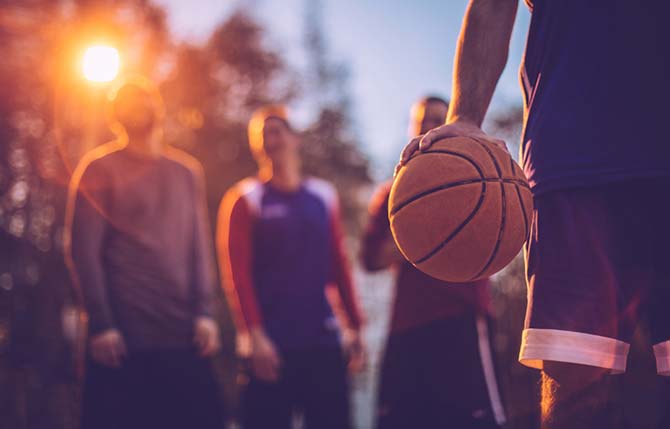
Basketball is your passion? Are you planning on coaching a team? Well you need to be well prepared. Here you will learn everything about the basics of basketball training and how to put together an optimal training session. In this interview, sports psychologist, coach and trainer coach Dr. Sebastian Altfeld will reveal his best tips from planning to execution.
The basics of a basketball workout
Those who want to turn basketball into more than just a hobby or become a coach are confronted with many questions. Here we will give you answers and provide the foundation of basic knowledge regarding the structure and flow of a basketball training session.
See the interview with our expert on basketball training Dr. Sebastian Altfeld
What does a basketball training session look like?
A basketball workout typically consists of four phases:
- Warm Up
- Main Workout
- Practice Game
- and Cool Down
These phases are usually separated by short breaks. A workout plan helps structure the training sessions. We will go into more detail in the following article.
How long is a basketball training session?
The length of training session is up to you. Typically it should last between 90 minutes and 2 hours.
Training Frequency
Hobby teams usually train once or twice a week. Professional players will train nearly every day.
Where to Train?
Most often coaches train their team in a gym. Individual training sessions or parts thereof can also be done on an outside court or out in nature.

Equipment for a Basketball Training Session
All players need the proper training attire: This consists of a basketball jersey and shorts. Make sure that the jersey lets you move freely and isn't too restricting. Basketball requires high mobility: Players are required to turn quickly, sprint or jump without restrictions.
Good basketball shoes are also important. You are well advised to try on several basketball shoes and comparing various types before committing. In order for the shoes to fit properly, be comfortable and last a long time, players should seek advice from a specialist shop.
Additional Equipment
Obviously, the basketball itself is the most important piece of equipment. To keep the workouts interesting, coaches can also use cones, jump ropes, weights, flags or various mats for ground based exercises. Here, coaches are only bound by the limitations of their own creativity. However, not all clubs or hobby coaches have the financial means for such an extensive arsenal of workout equipment.
For the coach it would be a good idea to have a training folder, a clipboard as well as a pen and paper or notebook. This way, they can quickly write down important notes during the workout.
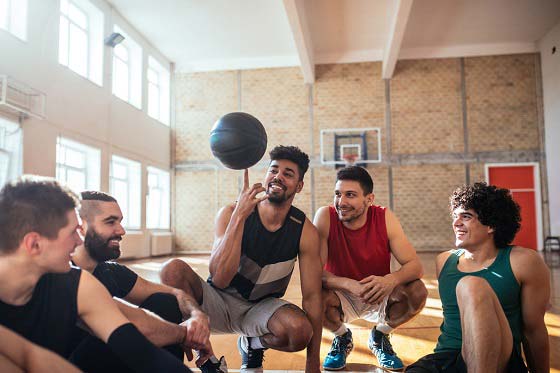
Know the Scope of the Workout
Make sure that the players are not bored by long breaks or long talks. The workout should be diverse and fun for the players.
Know the focus of the training session beforehand:
- Technique and strategy: This includes drills for ball handling, shooting and lay ups, dribbling and fakes or passing. New and difficult coordination exercises or mentally challenging exercises should be included in the first part of the workout. Here the players are still at their full performance and concentration ability.
- Athletic training: This includes agility, mobility, strength training, stability, speed, jumping power and conditioning.
- Psychological training: It is very important to work on building team spirit. A good workout plan should also include targeted exercises for this.
Planning the Basketball Workout
For training to be effective in the long run, it is important that it be structured properly. For this, a coach should first put together a rough time concept and coordinate the workout sections with one another.
How to Structure my Workouts?
A rough structure includes
- a long term plan (over the next few years),
- the season plan (adjusting the workout contents and intensity to the season),
- the block plan (planning complex training modules over the course of several weeks)
- as well as structuring individual training sessions.
For every training session, the coach should consider what the focus is - for example (shooting) technique, speed, coordination, strength or endurance. Creating a training plan for every session can help him and his team with this task. Here is an example, of what a training plan can look like for a session. In this example, the focus is on athletic training. Nowadays, there are also apps that can help a coach put together a training plan.
Remember: Every plan should always be specific to the team, your goals as well as the skill level and age of the players.

How to Properly Structure a Workout
The basic and therefore most sensible structure for a basketball training session consists of four phases:
- The warm up phase helps players avoid injuries and get ready mentally for the workout. The warum up should last about 10 to 20 minutes.
- In the main phase the focus lies on training particular aspects. This usually takes up about 45 minutes.
- A pratice game should always be included in a training session. Set aside about 30 minutes for this.
- The cool down phase can last about 10 minutes and gives players an opportunity to wind down after training.
An interview with expert Dr. Sebastian Altfeld: How to plan an effective basketball workout
In this interview, sports psychologist and coach Dr. Sebastian Altfeld gives us his best tips for a successful basketball workout and how future coaches can put one together themselves.
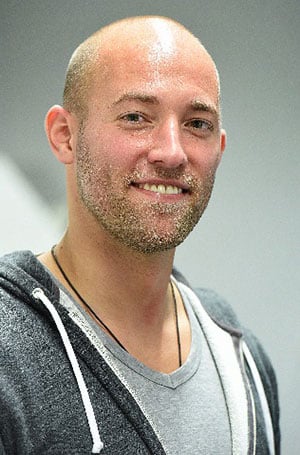
The expert
As a sports psychologist, clinical psychologist and psychotherapist in training, Dr. Sebastian Altfeld is successfully helping high level athletes, (national) teams, referees and coaches cope with performance pressure, stress and high demands.
In addition, he is in charge of the sports psychological content of the B and A licence coach training of the German Basketball Federation and works with Germany's elite coaches from various sports. He himself is very passionate about basketball and has the B licence in coaching.
owayo: Dr. Altfeld, you have worked with many basketball teams and coaches and are involved with training coaches for the German Basketball Federation. What can you tell new coaches before their first training session with a new team? Dr. Sebastian Altfeld: "A coach should be well prepared for their first practice session. This will give them confidence and will help them exude positive vibes. If they are not well prepared, they might come off as unsure of themselves and stressed out. Players will see that and possibly think that they are incompetent, even though it might not be the case at all. Making up for this negative first impression might take a very long time.
I also think it's important to show the team what you are going to expect from them. In turn, you will also need to figure out what the players expect from you and find a common ground. Ways to do that would be a team meeting, individual conversations or questionnaires.
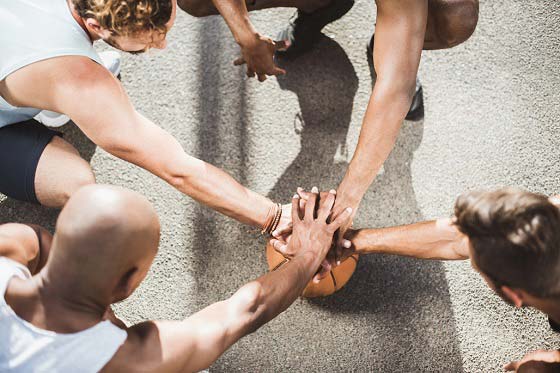
A coach should communicate with their players on a regular basis. Part of this is understanding your player's point of view in order to develop the basis for a necessary relationship of trust. This will make coaching each player easier and, in the long run, reduce conflicts and misunderstandings that are easily avoidable."
How can a coach determine their players' skill levels in the beginning? "I think it depends on which aspect I want to look at. Are we talking about basketball skills? Here the best tool for a coach is observation: Game situations, drills that take the players out of their comfort zones, or competitive games are great for this. Keeping tabs on how players act off the court can also help.
Personally I find one-on-one conversations with the athletes to always be beneficial. Showing a real interest in their strengths and weaknesses is invaluable when it comes to training players.
Sport scientific or sport psychological tests are also very important. On the one hand, it will give you comparable values to examine the effect of training over time. On the other hand, it will paint a complete picture of the player."
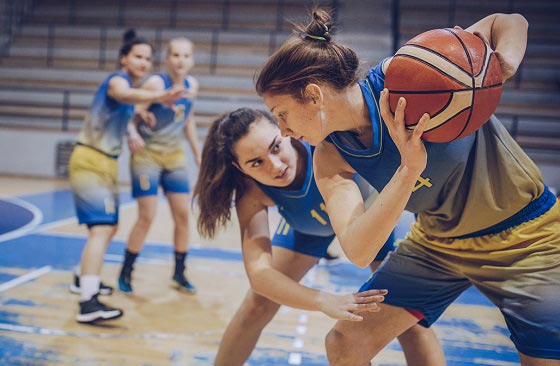
What should the coach think about before creating a training plan? How do you give it structure? "In my opinion there are several important consideration that should come up long before you step in front of your team (laughs).
As a coach you should ask yourself the following questions:
These factors need to be considered when creating a training plan. Ideally, I have also already created a plan around the strengths and weaknesses of my team before the season and, with the help of fixed dates such as games and practice sessions as well as holiday periods, sectioned off individual training phases. This way, I can prevent overtraining my athletes but also systematically train my players' strengths and work on their weaknesses.
The plan should be kept flexible enough so I can react to changes on the fly."
What do coaches need to be aware of when putting together a pratice session? How do you keep it exciting without boring your players? "From a sport psychological perspective, I strongly recommend to always present athletes with new challenges. This creates new stimuli and goals. Scientific studies have shown that repetitive and monotonous training is one of the killers of motivation. All you need to do is change a simple parameter of a drill: For example, scoring a certain way is now worth three points.
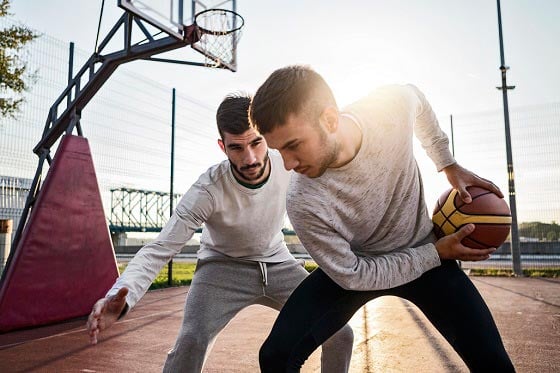
I think it also helps to visit experienced coaches and take inspiration from their training to discover new drills. Taking cues from training regimines in other sports can also give you great ideas for your own regimines."
Should players also be included in creating a training plan or should this be reserved for the coach? "I am absolutely convinced that it is a good idea to include your players into the training process, coaching or game preparation. Coaches often call for 'motivated players'. If you then look at what everyday training looks like for them, you often see that players have little to no say in setting goals for the season. The reason is simple: It's easier and faster. The problem, however, is that players might not be able to identify with the goals. At first including your players is more complex and costs time. By including the athletes, however, they will have a better grasp of the task at hand and the impact they have in a team. By letting them make decisions themselves, I help the athlete identify with the process, develop an interest and be motivated intrinsically - from within.
This also means trusting your player. This is also a very important variable for your own performance: Knowing that the other person trusts me."
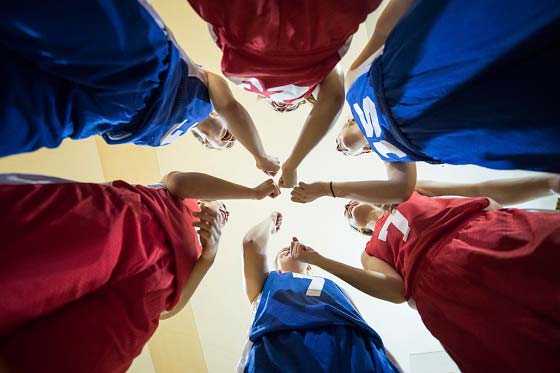
Do you have any other tips for successful training? "Trainers should always be critical of their own training methods. Here are some insightful questions to ask: How do I deal with players? Do I behave according to my values? Am I achieving what I set out to do with my behavior?
Coaches are often surprised when they watch a recording of their practice session and realise that they seem different from how they see themselves. At the same time, this means that I, as a coach, am able to reflect on my behaviour and be open for improvement. This creates a feedback culture, where people are not afraid to give me honest feedback."
We'd like to thank Dr. Sebastian Altfeld for this very informative interview!
Let's Get Started!
Now you know all the basics of basketball training and you and your team can get started. The internet can give you further tips on training. There are countless websites and message boards where you can discuss the ins and outs of basketball training. You can get started with the YouTube Channel "ILoveBasketballTV".
Want to learn more about basketball tactics? Our article about tactics and strategy in basketball will tell you everything you need to know about planning your attacks and defense. While you're at it, you can also read up on how to train a perfect dunk.
An important factor for team building in basketball is a good fitting, customised basketball jersey. This strengthens the sense of community in your team and at the same time creates a strong recognition value at competitions or events.
With our 3D Kit Designer, you can create your very own design, including texts and logos in your favourite colours.
We hope our article will help you plan your next practice session and wish you all the best!
Photo credits: Title picture: © gettyimages/svetikd, Picture 1: © gettyimages/mihailomilovanovic, Picture 2: © gettyimages/bernardbodo, Picture 3: © gettyimages/Wavebreakmedia, Picture 4: © Dr. Sebastian Altfeld, Picture 5: © gettyimages/LightFieldStudios, Picture 6: © gettyimages/South_agency, Picture 7: © gettyimages/Nastasic, Picture 8: © gettyimages/FatCamera.